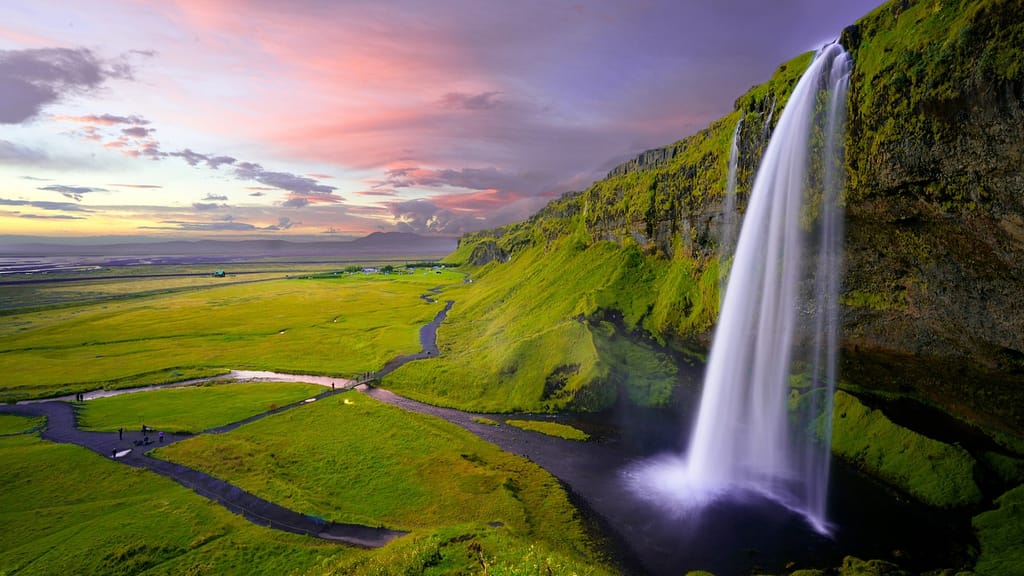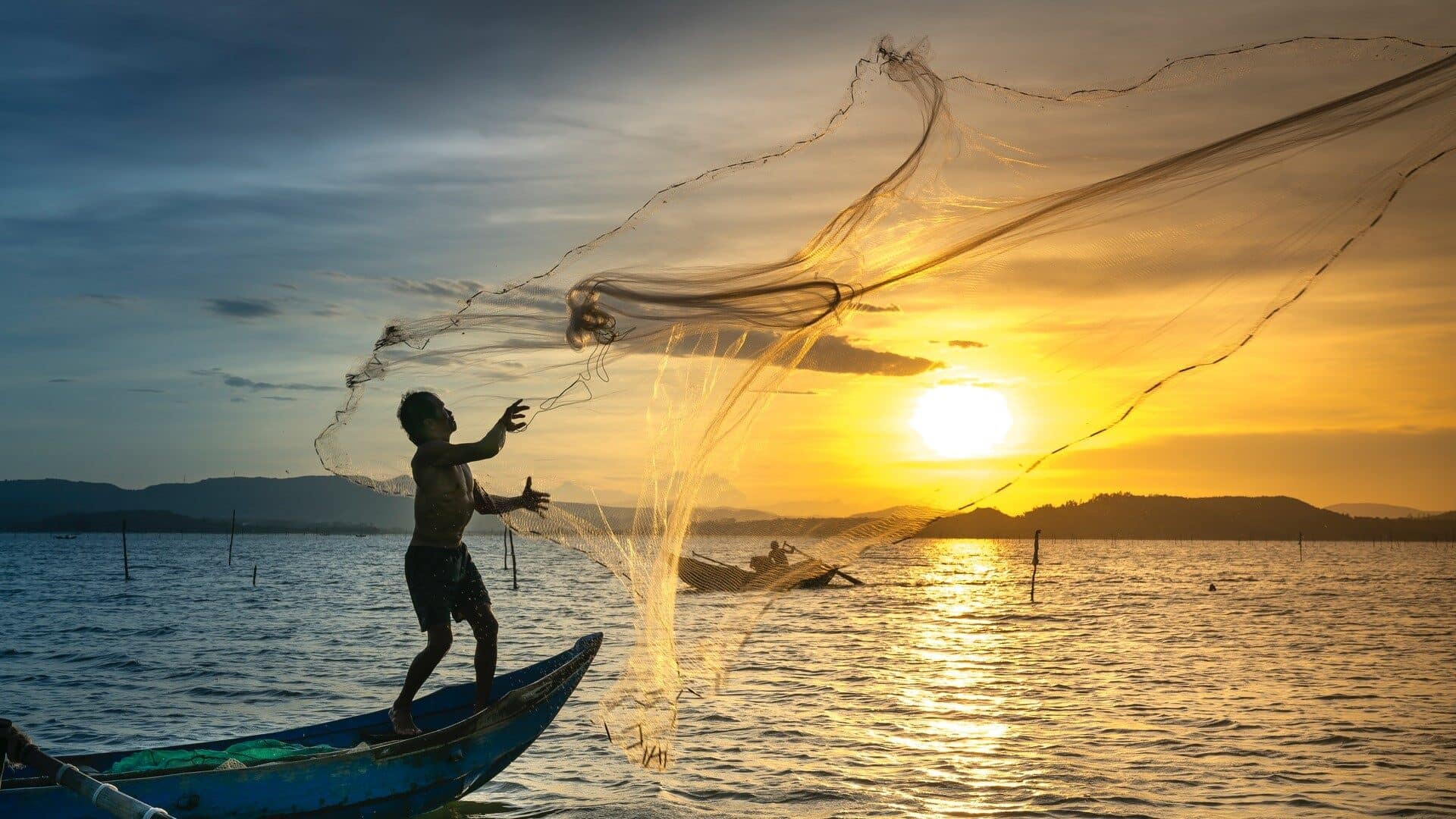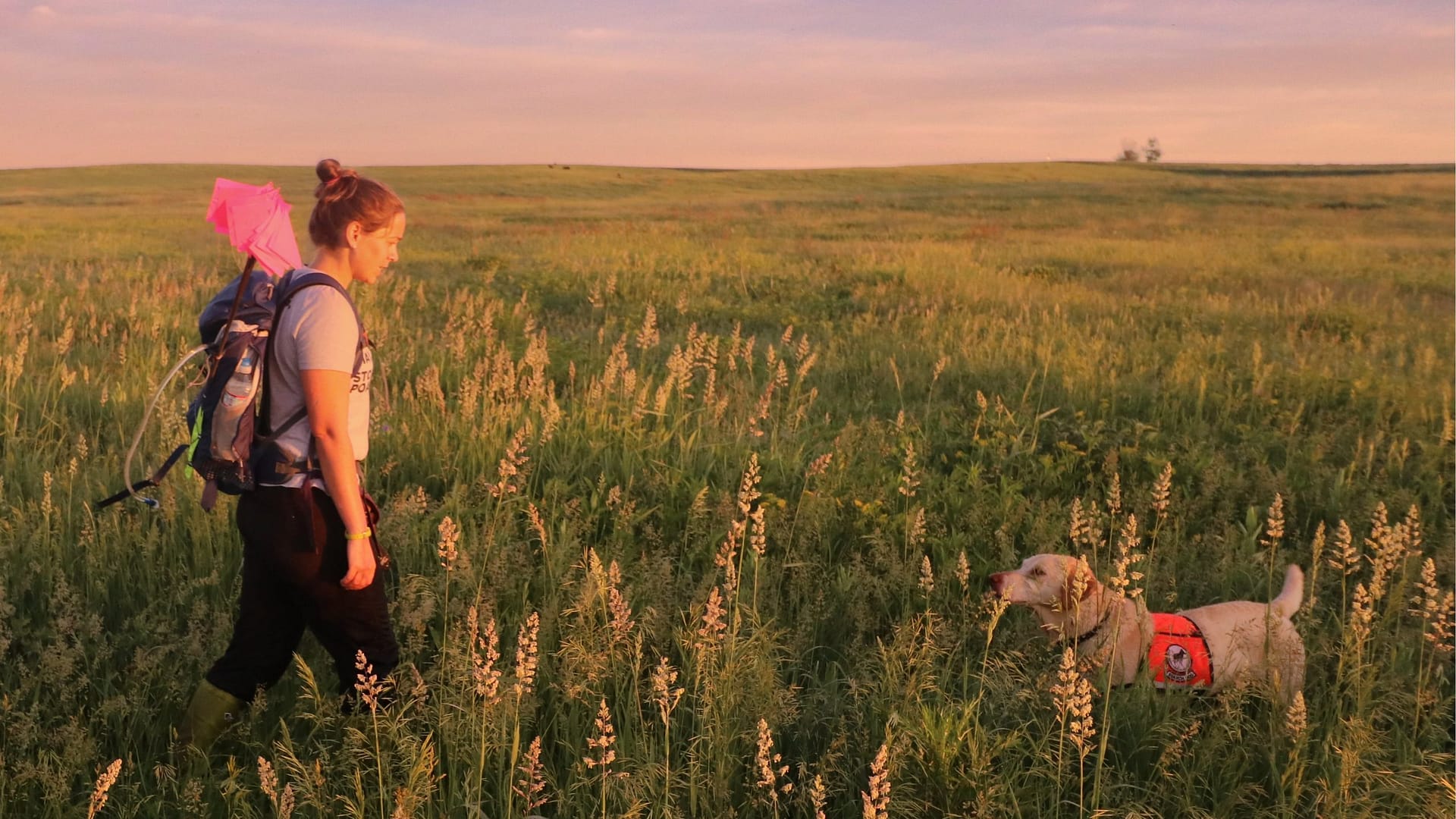If I tell you to imagine the wilds of Iceland, my guess is a thick forest is the last thing to come to mind. Images of Iceland more often focus on its striking blue thermal baths, stunning, barren landscapes, magical waterfalls, and wild seaside vistas. Rarely do we see or hear about the vast green forests that were once ubiquitous on this Island nation.
When humans first reached Iceland 1150 years ago, the landscape looked very different from how it does now. Scientists estimate that between 25 and 40% of the island was covered in forests. 1 As humans used the trees for building boats, homes, and fires, and grazed sheep on the deforested land, the woodlands dwindled. Now, just 1.5% of Iceland remains forested. 2
With the forests gone, the elements have taken their toll on the environment, creating vast deserts and swaths of degraded soil that continue to grow as the high winds whip across the land. This is where the organization Mossy Earth is stepping in, helping to reforest and rewild Iceland’s landscape by reversing this desertification, returning trees to its soils, and helping to restore a landscape from the foundation, up.

Desertification in a land of Glaciers and Snow?
When you hear the word “desertification,” the places that spring to mind are probably not also famous for their glacial lakes complete with icebergs. But desertification isn’t just for the hottest places in the world. As soil quality degrades because of overgrazing, deforestation, and top soil eroding away, it becomes more difficult for new vegetation to grow. Without vegetation to lock water into the ground or keep soils from blowing away, these barren deserts continue to expand across the landscape. After centuries of this process taking place in Iceland, 40% of the country has become a desert of sand and volcanic glass. 3
Not only does desertification significantly change the terrain of landscape, it makes it nearly impossible for ecosystems to recover on their own. Native species no longer thrive. Soils can no longer support plants for agriculture. Dust storms become commonplace. Ecosystems are forced to change and adapt.
For a place that has been so long without its forests, it can be difficult to imagine the landscape looking any different than its current, almost martian, vistas. Luckily, the forests that still remain give us a glimpse of rich biodiversity that these once prolific habitats can sustain.
Bringing Back Iceland’s Native Forests
Often these days, the outcomes of tree planting efforts are measured by how much carbon dioxide these trees will remove from our atmosphere. But Mossy Earth’s approach is different. While carbon sequestration is important, their primary focus lies instead on restoring native ecosystems (which naturally sequester carbon, of course!) By fostering vibrant native ecosystems that restore balance to environments that need it, carbon sequestering becomes a happy side-effect, rather than a primary focus.
In Iceland, Mossy Earth’s reforestation efforts are focused on restoring the native woodlands: birchwood forests. As of the publication of this article, Mossy Earth has planted over 60,000 trees, with plans to continue scaling the project during the 2023 planting season. The species they are focusing on planting include native birch, rowan, aspen, and tea-leaved willow. These stands of forest will provide much needed habitat for a variety of native bird species like redpoll, snipe, ptarmigan, and redwing. Not to mention, these woodlands will provide the much needed windbreaks and erosion control necessary to start restoring Iceland’s soils. 4
Mossy Earth: Taking a different approach to conservation
Let’s take a step back, though, to talk about the awesome organization behind this reforesting project: Mossy Earth. Since 2017, they have been on a mission to restore wilderness and fight climate change through rewilding, reforestation, and supporting underfunded ecosystems and species.
From planting trees in Iceland to creating kelp forests in Portugal, monitoring Otter Populations in California to saving Slovakia’s Ground Squirrels, they are involved in a remarkable number of projects around the world. The best part is that they make it incredibly easy to be a part of all of these projects! For as little as $6.75 a month, you can sign up for a Mossy Earth membership that allows you to contribute to their work and track your impact. To learn more about membership, you can visit their website to learn about how they measure their impact and their commitment to transparency with your contribution. (And if you have a nature lover in your life, you can even gift a membership!)
Reforesting in action!
In order to get a better understanding of the scale and story behind the Reforesting Iceland project, Mossy Earth has created an amazing video detailing the history of the project, their vision for the future, and a story that led them to changing their plans after making frontpage news! Give it a watch.
If you want to learn more about the projects Mossy Earth is working on, I highly recommend you go check out their YouTube channel to watch some of their videos. They are informative, beautiful, and really make you feel like there is a lot of hope for the future if we invest in conservation efforts like the ones they are championing.
Fighting to Protect Even the Smallest Ecosystems
From wetlands to windswept mountains, life has found a way to survive in even the most unique places. While our attention is usually drawn to the places with animals that capture our imagination, habitats everywhere are in need of our protection. Perhaps we won’t get people to fall in love with a rare species of vole the way we can get them to fall in love with the world’s big cats, but the ecosystems they are an emblem of are both worthy of our attention and protection.
This is, in part, why I love the work of Mossy Earth. They are shining a light on some of the less known, less talked about habitats that need our protection. In documenting their work through the videos they share on their YouTube channel, they make their work even more accessible, bringing concepts like reforesting and rewilding to new people around the world.
To stay up to date with Mossy Earth’s latest projects, make sure you follow them on YouTube, Instagram, or LinkedIn. Or you can sign up for their monthly newsletter on their website.
If you want to see a few more projects we’ve written about that shine a light on some of the world’s less talked about conservation stories here are a few to jump into:
All Hail the Great Hellbender Salamander!
Snot otter, lasagna lizard, grampus, whatever you call it, this gigantic, slimy, and loveable creature could be the unlikely superhero saving the world’s amphibians. How, you ask? Well, let’s get to know them a little better and find out!
Read Article Watch Video Listen to PodcastOh Dam! How Beavers are Master Environmental Engineers… and Might Just Save the World
Imagine if we had millions of eager, highly skilled, environmental engineers, ready to devote their lives to fight drought, forest fires, and flooding — 24/7, 365 days a year — never asking for payment, just wanting to be left in peace. Wouldn’t we want to welcome them to our communities? Well, you don’t have to hope they show up, they’re already here! They just aren’t people, they’re beavers.
Read Article Watch Video Listen to PodcastStay beautiful & keep laughing!
-Liesl

Don’t miss out on a single article!
Enjoy unlimited access to over 500 articles & podcast that give you a positive perspective on the state of the world and show you practical ways you can help.
Notes:
- Skógræktin. (n.d.). History of forests in Iceland. Skógræktin. Retrieved December 20, 2022, from https://www.skogur.is/en/forestry/forestry-in-a-treeless-land/history-of-forests-in-iceland#:~:text=As%20much%20of%20Iceland%20was,40%25%20of%20Iceland’s%20land%20area ↩
- Mossy Earth. (n.d.). Reforesting Iceland. Mossy Earth: Rewilding and Reforestation Membership. Retrieved December 20, 2022, from https://www.mossy.earth/projects/reforesting-iceland ↩
- The New York Times. (2017, October 20). Vikings razed the forests. can Iceland regrow them? The New York Times. Retrieved December 20, 2022, from https://www.nytimes.com/interactive/2017/10/20/climate/iceland-trees-reforestation.html?mtrref=undefined&gwh=F11DA220EA198760F14F087BBBBFAB1A&gwt=pay&assetType=PAYWALL ↩
- Mossy Earth. (n.d.). Reforesting Iceland. Mossy Earth: Rewilding and Reforestation Membership. Retrieved December 20, 2022, from https://www.mossy.earth/projects/reforesting-iceland ↩
- Mossy Earth. (2022, August 4). We’re bringing back Iceland’s forgotten forests. YouTube. Retrieved December 20, 2022, from https://www.youtube.com/watch?v=K-r2EetCtO00 ↩








